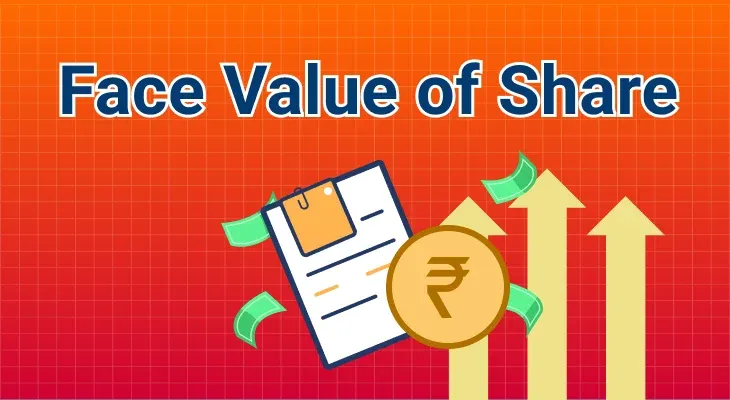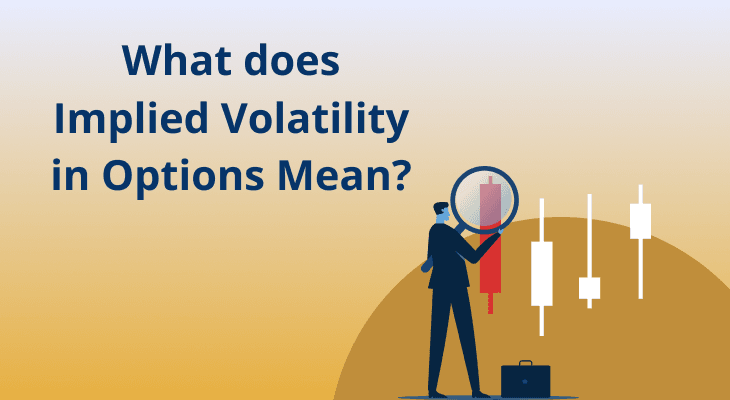
Face Value of a share: Explained
There’s an old saying, “Never take anything at its face value”. Well, as philosophical and profound as it may be, the context is quite different in the share market. The face value of a share of a company is the original cost of the share when it was issued. For example, the face value of a single Reliance Industries Ltd. (RIL) share was ₹ 10 at the time of its issuance. Over the course of several years, and weathering several ups and downs (much like most stocks on the stock market), RIL has reached a current price of ₹ 2,373 per share (closing price on 25th April 2023). Clearly, the face value of a share and its market value are two different things entirely. Hence, the question beckons – what is the face value of a share and why is it important to know? Read on to get all the insights you need on this topic.
What is face value in the stock market?
The face value of a share (also known as par value) is its original deemed value when it was introduced in the market. Back in the days when shares used to be in physical form, the face value used to be printed on the share certificate. Consider a hypothetical scenario in which there are no market movements or external factors affecting the price of the share, then the shares can be bought and sold on the face value alone.
Naturally, that is not the case. As in the example of RIL quoted earlier, over time, there are several aspects that influence the movement of the face value of a share. Positive year-on-year performance, stable financial health, reliable brand image, and upbeat investor sentiments are just some of the factors that can propel the original face value of a share to a heightened current market price. For you, as a shareholder, this is the good news, of course, since this increases your return on investment. On the flip side, the poor performance of the share will contract the value of your holdings in the company.
Why should you know the face value of a share?
By now, you must have understood that the meaning of the face value of a share is not of great significance in actual trading. In other words, when you buy or sell shares, it is at their current market price (CMP), irrespective of what the face value might have been. Moreover, the face value of a share is a figure that was fixed when the share was first issued. It has no bearing on the present value of the stock and does not influence the company’s market position in any way. So, then, as an investor, why should the face value of a sharing matter to you? Well, here are some of the ways that knowing the face value of a share can benefit or impact you.
Dividend Payout
The face value of a share is used to calculate the dividend payout per share, which is usually a percentage of its original face value. Let’s assume you own 1000 shares of a company with a face value of ₹ 10 per share and a current market price of ₹ 100. Now, this company has announced a dividend of 50%. This dividend is calculated on the face value of the share. This means you will receive a dividend of ₹ 5 per share (50% x 10), and not ₹ 50 (had the current market price been taken into consideration). With a holding of 1000 shares, your total dividend will amount to ₹ 5,000. As you can see, knowing the face value of a share helps in determining the dividend payout.
Stock Split
A stock split occurs when a company decides to divide the face value of the original share into a proportionate split. This leads to a higher number of shares in the market while the value remains the same. This is usually done to make the shares more affordable for investors and increase the company’s liquidity in the market. For example, a stock split of 1:2 for a share with a face value of ₹ 10 means your existing stock holding in the company will double, the face value will reduce to ₹ 5 per share, but the net worth of your shares will remain the same. With a larger number of shares in your account, you can benefit from a price rise and/or a dividend payout in the future.
Valuation
Understanding the market valuation of the company is an essential process before investing in it. If the intrinsic value of the company’s stock is lower than its current market value, then the stock is deemed ‘overvalued’. In the case of the opposite scenario, the stock is referred to as ‘undervalued’. Overvalued stocks can reduce your net wealth when a market correction happens. On the other hand, undervalued stocks have the potential to generate good returns when purchased at a lower price than their actual worth. The face value of a share is multiplied by the number of outstanding shares to arrive at the nominal value of the company's equity. This is then used in various valuation techniques to determine the company's worth.
Derived Investment Decisions
The face value of a share is set when the company issues its shares to be made available to the public to raise capital to meet its own needs. Typically, a company issues two types of shares; common shares and preferred shares.
Common Shares
When you purchase common or regular shares online, you own a part of the company and get voting rights in the company’s affairs in direct proportion to your net stock holdings. Over time, if the company performs well and market conditions are favourable, the market price is likely to increase, generating a profit on your investment. You may also receive dividends as surplus income on your investment. The reverse is also possible, though. If the company performs poorly and the stock price drops, the value of your holdings will reduce. Common shares are directly impacted by market movements and due consideration needs to be given to all factors influencing the price movement of the share before investing.
Preferred Shares
The more risk-averse investors who prefer short-term returns and do not wish to regularly track market movements over a long period can opt for preferred shares. These shares have a fixed value and a fixed dividend (if applicable). Irrespective of the company’s performance, you will get the predetermined value of your shares upon maturity and, in some cases, continue receiving dividends.
Index Funds
If you do not wish to have direct exposure to individual company stocks, then you have the option of investing in index funds. Index funds are a form of mutual funds that allow you to invest in a stock index like the NIFTY50 or the BSE SENSEX, as a lump sum amount or via regular SIPs. The funds track the performance of specific indices and aim to match their annual performance.
FAQ
What is the difference between the market value and the face value of a share?
The face value of a share is the nominal value of a share as determined by the company at the time of issuance. The market value, on the other hand, is the price at which the share is currently trading in the market.
Is the face value of a share constant?
While the face value of a share is fixed at the time of its issuance, it can be changed later on. Common examples of this occurrence are when companies do a stock split or a reverse stock split, which involves changing the face value of a share. Additionally, companies can also issue bonus shares, which increases the number of outstanding shares while reducing the face value of each share.
Is knowing the face value of a share vital for trading in the stock market?
Stock trading happens on the current market price and the face value has no bearing on it. However, it is important to know the face value for various calculations related to the stock, such as valuation and dividend calculations.


